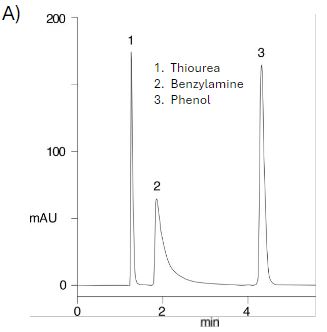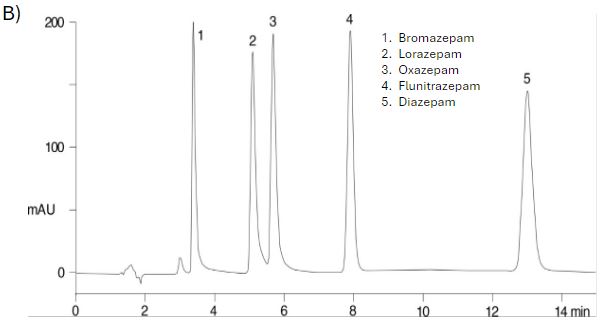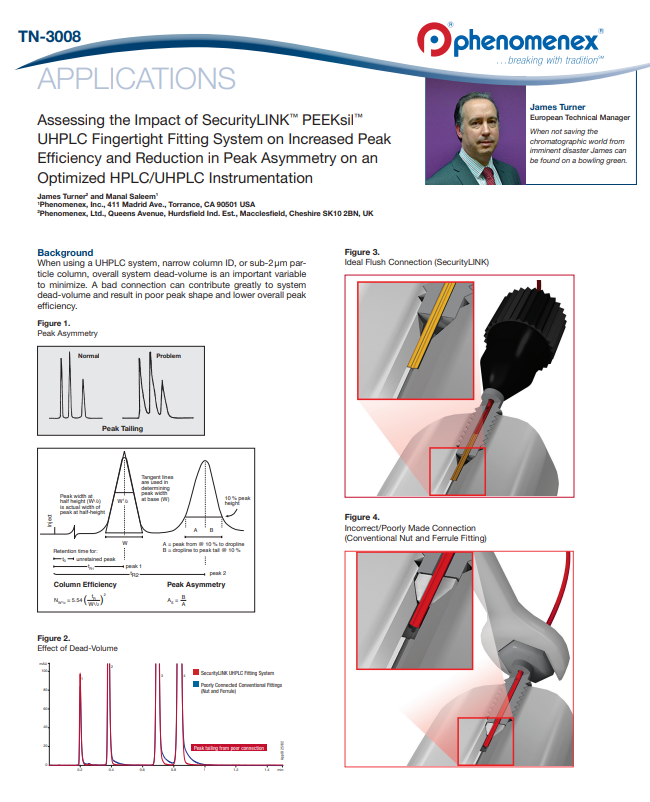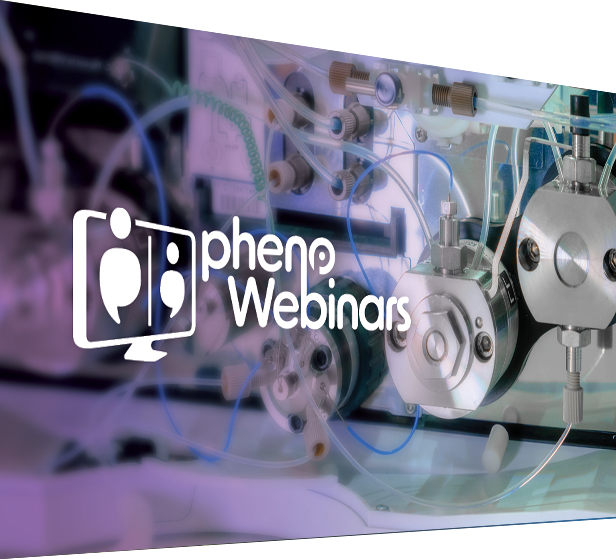HPLC/UHPLC Technical Tip
Level: Basic
Overcoming Peak Tailing of Basic Analytes in Silica Type A Stationary Phases in RP
In this technical tip, we will address the common issue of peak tailing encountered when working with basic analytes and “type A” silicas and offer two strategies to overcome it.
Introduction:
Early reversed phase columns were based on “type A” silicas, these materials had substantial metal contamination, causing the silanol groups on the surface of the silica to have greater and more variable activity. Manufacturers endcapped the materials as far as possible after bonding with C18 reagents, in an attempt to reduce the number of sites where ion exchange could take place. However basic compounds would generally tail badly. Let’s explore how we can overcome this limitation.
Strategies for peak shape improvement:
• Working at low pH can help neutralise the silanol groups on the silica surface, preventing ion exchange from taking place. A 10-20 mM phosphate buffer, pH 2.5 is ideal for this purpose, although care must be taken if using acetonitrile as the organic solvent, to avoid precipitating the phosphate buffer when running a gradient.
• Adding a competing base (or silanol suppressor) to the mobile phase. Mobile phase additives like TEA (triethylamine) at 5 mM concentration would typically be used. The idea here is that the competing base associates with the anionic silanol groups, reducing their availability to interact with analytes. This approach, whilst successful, generally leads to short column lifetime as silanol suppressors also tend to cause more rapid column stationary phase and endcapping hydrolysis, which in turn exposes more silica allowing for more tailing to occur.
These strategies will help diminish the tailing effect but may not completely remove it as demonstrated in the below example chromatograms (Figure A and B).

Mobile Phase: 20 mM potassium phosphate buffer pH= 2.5 : Methanol (70:30)
Flow rate: 1 mL/min
Detection: UV-Vis @254 nm

Mobile Phase: 20 mM potassium phosphate buffer pH= 3 with 400uL/L Triethylamine : Acetonitrile (63:37)
Flow rate: 1 mL/min
Detection: UV-Vis @230 nm
Figure A shows the moderate effect of using an acidic pH to mitigate tailing for benzylamine, while Figure B shows the resulting chromatography after adding triethylamine as a modifier.
We recommend the use of type B (ultra-pure) silica in the development of new separations. Luna™ Omega fully porous and Kinetex™ Core-Shell columns provide excellent peak shape for challenging compounds.
Increase Peak Efficiency and Reduce Peak Asymmetry
Assessing the Impact of SecurityLINK™ PEEKsil Fingertight Fitting System on Increased Peak Efficiency and Reduction in Peak Asymmetry on Optimized Instrumentation.

On Demand Chromatography Webinars
Alongside the series of live chromatography webinars we host, you can also access all our recorded resources. Explore our library of on-demand webinars and watch at your convenience

Trademarks
SecurityLINK, Luna, and Kinetex are trademarks of Phenomenex.


